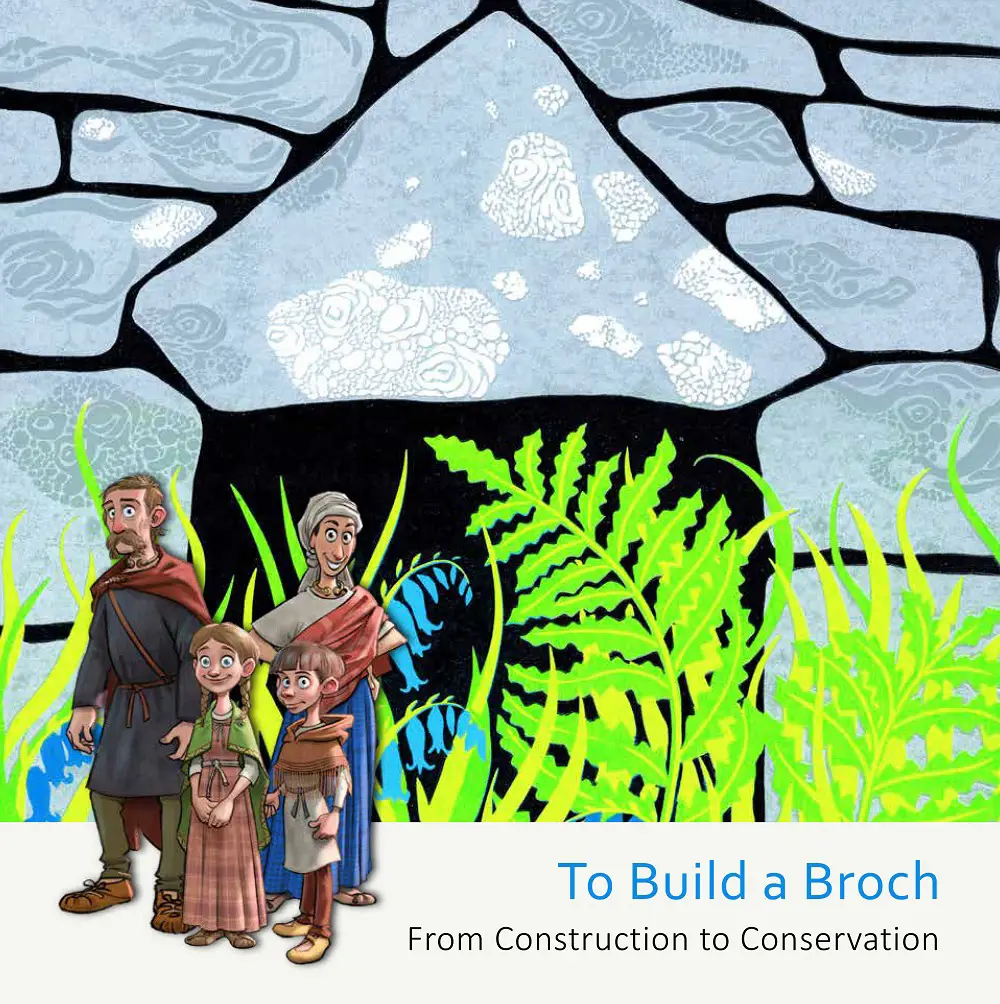To Build a Broch
To Build a Broch
Brochs are a truly unique aspect of Scotland’s rich prehistoric tapestry. These distinctive circular drystone towers display quite startling structural complexity. They rise high from their foundations by employing a series of weight-saving and load-bearing galleries, stairways and passages within their double-skinned walls.
They are mostly found in the north and west Highlands and Islands, with some unusual lowland outliers. They were built in the Iron Age, around 400 BC, and are part of a wider architectural tradition of building large domestic roundhouses in both stone and timber that developed over many centuries. Brochs are defended homesteads, commissioned by well-to-do productive households and constructed by experienced builders.

But there is no ‘standard’ broch, no ‘broch blueprint’ – brochs were a diverse collection of distinctive structural components, present in different ways within individual sites, although each reflecting the same architectural tradition.
To Build a Broch describes the building of a broch over two thousand years ago. It presents an illustrated narrative populated by a cast of cool characters – a story of complex structural engineering and bold architectural design, exploring an amazing vernacular building tradition that was the height of fashion over two thousand years ago.
We explore the archaeological investigation of brochs, considering both architectural design and structural engineering, and explain how we can read the ruins today, describing the various structural components that can be found in both unconsolidated ruins and consolidated structures. Fictional voices from the past describe the building of a broch, while contemporary voices from across Scotland’s vibrant heritage sector describe a wide range of cutting-edge work, including archaeological excavation, conservation management, heritage interpretation and digital documentation.
To Build a Broch: From construction to conservation (PDF)
Step back in time to imagine the construction of a broch in stone and timber, and ask yourself what it meant to build a broch.
A Thogail Dùn: Bho Thogail gu Glèidheadh (PDF)
Gabh ceum air ais ann an tìm agus cleachd do mhac-meanmna gus smaoineachadh air dùn a thogail le cloich is fiodh, agus faighnich dhìot fhèin dè bha e a’ ciallachadh a bhith a’ togail dùn.
Reading the ruins
The booklet aims to help teachers use the study of Scotland’s brochs as a cross-disciplinary classroom topic as part of the Curriculum for Excellence (Third Level), blending history, geography, English and the creative arts. As both reference material and learning resource, the booklet uses a popular communication style and bold design to prepare the practitioner with detailed knowledge and innovative ideas for their learners. Using this booklet, readers will explore three interlinked themes running through broch studies.
- The archaeological narrative considers questions of architectural design, and aims to get the reader thinking about how brochs were built, who built them, and why.
- The structural narrative encourages the reader to consider the buildings they see today in terms of their structural engineering and their various structural components; and to think about the destruction process and the material missing from the picture – the stone that has robbed and the timber and other materials that have been lost.
- Finally, the conservation narrative describes more recent and contemporary interventions such as structural consolidation, archaeological excavation, conservation management and digital documentation.
Recognising the various processes at work within the timespan between construction and collapse is an important step towards becoming a broch investigator, as is appreciating the differences between unconsolidated ruins and consolidated structures. Learning to spot these clues within the structure helps us to better understand the various narratives at play, and imagine the key moments in time.